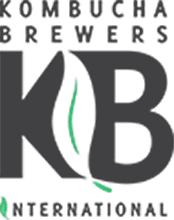Effect of pulsed electric field (PEF)-treated kombucha analogues from Quercus obtusata infusions on bioactives and microorganisms
Authors:
D Vazquez-Cabrala, A Valdez-Fragoso, N E Rocha-Guzmana, M R Moreno-Jimeneza, R F Gonzalez-Laredoa, P S Morales-Martineza, J A Rojas-Contreras, H Mujica-Pazc, J A Gallegos-Infantea
Abstract:
Pulsed electric field (PEF) is a promising non-thermal food preservation technology. The objective was to study the inactivation of yeasts in PEF-treated kombucha analogs prepared from Quercus obtusata infusions. Fermentation conditions of infusions from Q. obtusata were time (7days), sugar (10%), starting culture (10%), and inoculum (2.5%, at 25°C). The PEF treatment considered using square waves, an electric field strength (37.3–53.4kV/cm), PEF processing time (445.3–1979.2μs), an output temperature (18.31±0.98°C), input energy (21.2 - 136.5KJ/L), and two feed flow rates (51.42 and 102.85L/h). pH, °Brix, color determinations, microbiological testing, total phenolic, flavonoid content, DPPH test, and UPLC/ESI/MS/MS analysis were done. No changes at different PEF conditions were observed for pH and °Brix. Higher color changes were observed at higher specific energies. Acid-acetic bacteria were more sensitive to PEF than yeasts. Lower specific energies render products with higher polyphenolic content and antioxidant capacity. Pulse electric field is an interesting alternative to preserve kombucha analogs from oak leave infusions with minimal changes in physicochemical characteristics, antioxidant activity, and bioactive compounds. The present work describes the effect of feed flow and specific energy on the several characteristics of fermented beverages, determining conditions for best processing.
Keywords: flavonoids, kombucha, oak leaves, pulse electric fields, functional beverages, phenolic
Country: Mexico
Citation: Innovative Food Science & Emerging Technologies/Elsevier
Study Mailing Address:
Instituto Tecnolgico de Durango, Departamento de Ingenieras Qumica y Bioqumica, Blvd. Felipe Pescador 1830 Ote., Col. Nueva Vizcaya, 34080 Durango, Dgo., Mexico
Date Updated: January 13, 2021
 0 people like this study.
0 people like this study.